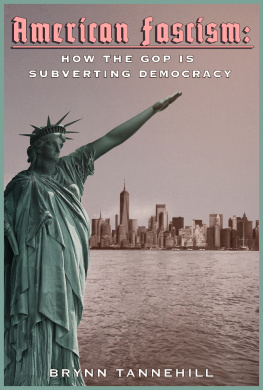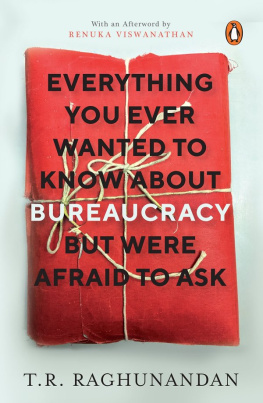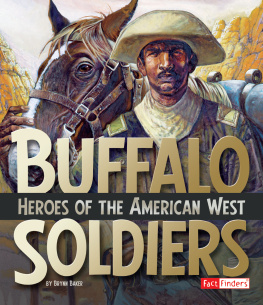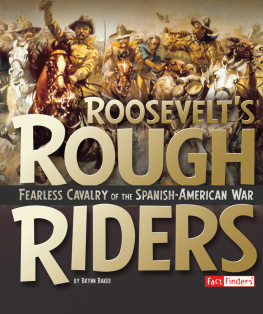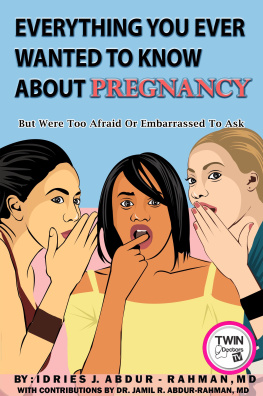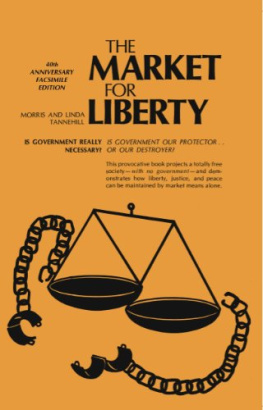INTRODUCTION
When I started writing for print and online publications, I had no idea where it would lead. I certainly didnt imagine I would be good at it or enjoy it enough to do it on a regular basis. Four years and over 250 articles later, people started telling me, You should write a book!
The problem was, I had no idea what the book should be about. My articles tackled a multitude of different topics; despite having written hundreds of thousands of words, there wasnt enough material on any one topic to write a full-sized book. The articles themselves tended to be about issues that were either hot topics in popular culture about transgender people, or issues that I thought needed greater exposure and education. Other articles were dedicated to busting the myths about transgender people that I saw cropping up repeatedly.
In the summer of 2016, it finally dawned on me that there was a unifying thread between most of what I had written: almost all of it represented things people should know about the transgender community. Some of them were things people should know because the public was asking about it. Sometimes the material was stuff people needed to know because of deliberately deceptive information about transgender people being put out there. Sometimes the articles covered things the public really should know, but that no one was talking about.
Thus, when I looked at what I had written over the past five years, there were articles that covered Trans 101 and Trans 201 topics, as well as articles covering the relationship between transgender people and politics, law, medicine, mental health, religion, feminism, gender studies, sex, sexuality, and even the military.
In short, what my articles had in common was that they addressed almost all of the most important issues facing the transgender community, and I had more than enough material available to tell people what they needed to know. It was, in effect, Everything You Ever Wanted to Know about Trans.
When I looked to see if any other book did something similar, I didnt find any. There are some that are excellent in their specific areas, such as Transgender 101 by Nicholas Teich, Whipping Girl by Julia Serano, and Trans Bodies, Trans Selves by Laura Erickson-Schroth. However, these were all comparatively narrow in their focus. Other books, particularly those on religion and politics, were often written by people hostile to the transgender community. These books presented poor science, while groundlessly advocating for legal and social marginalization of transgender people.
Thus, there are books that address individual topics, and many that have bad information, but none that present a holistic and integrated view of how all these pieces fit together to illuminate the reality of life in America today as a transgender person. I mean to address this now.
The goal of this book is to walk the reader through transgender issues, starting with Trans 101-level information (What does transgender mean?), Trans 201 discussions (What is it like being transgender in America today?), and then through the other areas where transgender people and issues are in the news. At the end of this book, it is my hope that someone who reads this cover to cover would be highly conversant on most of the critical public conversations around transgender people, and, I hope, a better ally as a result.
This book provides citations and peer-reviewed evidence. It also relies heavily on the consensus of mainstream subject matter experts and organizations, such as the American Medical Association, American Psychological Association, American Psychiatric Association, and the World Professional Association of Transgender Health (WPATH).
In a few areas where there isnt a body of research on a particular point, I refer to my own experiences. Generally, these are not critical ones, but anecdotes added to help the reader understand how the topic affects transgender people.
I also hope that this book will serve as a professional reference book and as a useful tool for transgender people and allies to better understand the myriad of pieces in play. The information within this book is fact based and rooted in medical and peer-reviewed research, hopefully ensuring a well-rounded experience for all readers.
Understanding transgender people and the challenges we face is crucial to making progress. More than anything else, I hope this book contributes in some way to that better future for us all.
There is an appendix of Case Law available to download at www.jkp.com/voucher using the code SOONEHE
Chapter 1
TRANS 101
Answering the basic questions
For people who are reading this because theyre curious and want to know more, great, thank you, and welcome aboard! For those of you who already have a background in transgender issues, this chapter may help you explain to other people the basics on what transgender means, what it is, isnt, and even put together your own Trans 101 presentations. Few people have close friends or family who are transgender, so many of us end up as ambassadors for the community whether we want to be or not.
So, lets get started.
Q: What is the difference between sex and gender?
A: In very simplistic terms, sex is whats between your legs, and gender is whats between your ears. Sex refers to physical characteristics and gender relates to behavioral and psychological ones. This includes not just genitalia, but a whole host of physical factors such as chromosomes, genetics, and epigenetics. Gender is how we see ourselves, whether man, woman, neither, or somewhere in between. Transgender people are those whose sex and gender do not match.
Q: What is the difference between gender identity and gender expression?
A: Gender identity is how a person would describe their gender. Gender expression is an individuals characteristics and behaviors (such as Gender identity and expression dont always match and thats just a normal part of human diversity. For instance, there are people who identify as women who were born female (cisgender women) and who also prefer to have short hair and play contact sports, which are behaviors typically assumed to be something men do (referred to as masculine leaning gender expression).
Q: Is gender purely a social construct, or is it biological?
A: Its a bit of both. Pink and blue do not intrinsically have a gender, and are thus very much a social construct. However, research also shows that people have a biologically determined gender identity, Researchers are still exploring the interaction between the two, though it can be said that culture has a great deal to do with how we express our gender.
Q: Are sexual orientation and gender identity the same thing? Are they related?
A: They are not the same thing, though in some cases they are correlated. They are almost perfectly uncorrelated when describing transgender women. The National Center for Transgender Equalitys (NCTE) landmark study of over 6000 transgender people in the US found that transgender women are about equally likely to be attracted to men, women, or both. Transgender men are somewhat more likely to be oriented towards women.
Q: What does it mean to be transgender?




